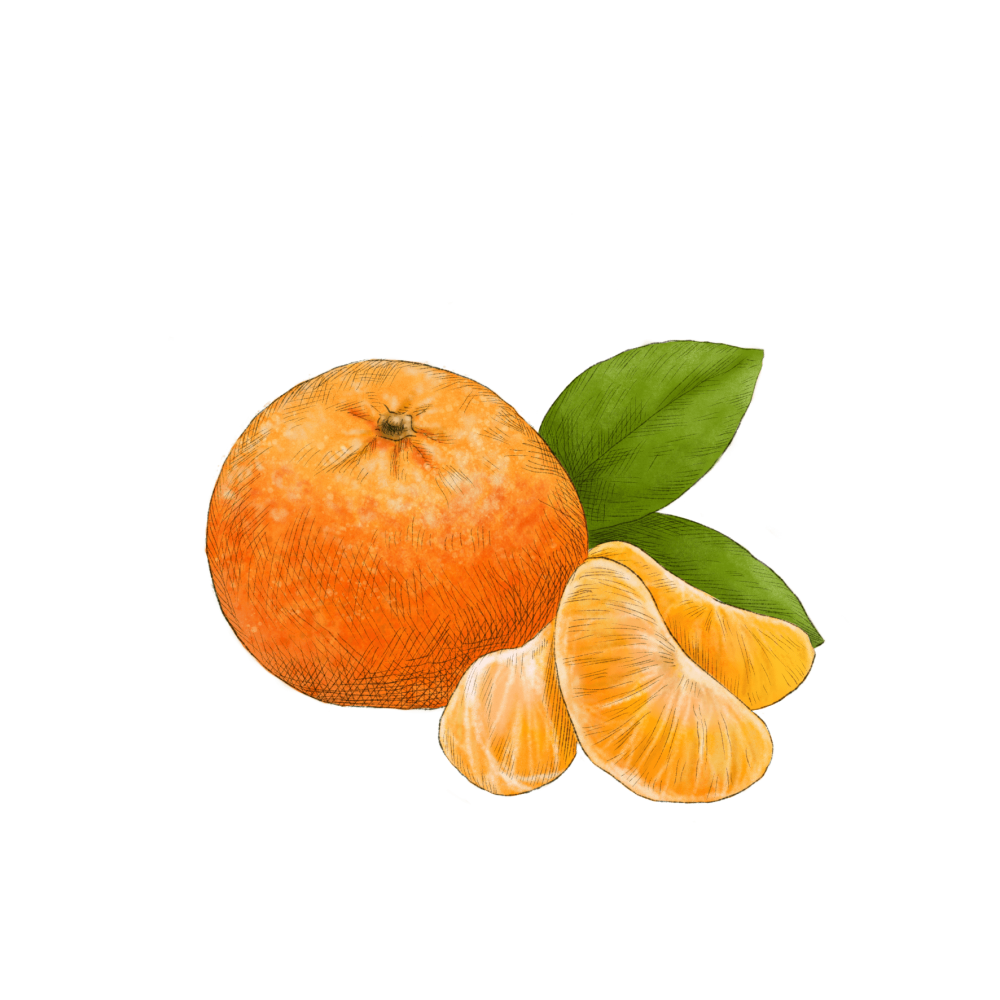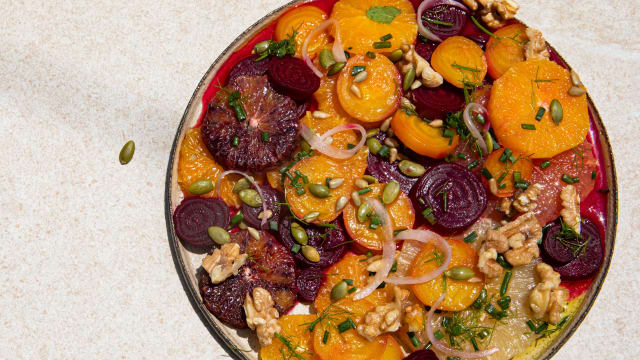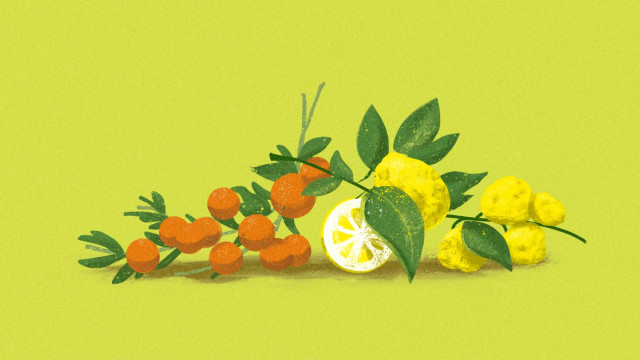Mandarin Orange

Latin name: Citrus reticulata
Other names: mandarin
Uses: fruit, juice, seasoning
What are mandarin oranges?
We tend to think of mandarins as a type of orange, when in fact the opposite is true: it is oranges that are the offspring of mandarins (and pomelos). Around the onset of the cool season, markets are abundant with all types of citrus fruits, but perhaps none are as holiday-ready (or easy to peel) as the squat little mandarins in their mesh bags.
Why are mandarin oranges healthy?
Citrus is famous for its vitamin C content, and mandarins are no exception. They’ve also got lots of vitamin A, calcium, and potassium, so they’re good for your eyes, bones, blood, and more. They’re effective mood boosters, too. Apart from their cheerful color and candy-sweet flavor, in Ayurveda mandarins are used to make an oil called “happy oil” that helps relieve stress, anxiety, depression, and insomnia.
What do mandarin oranges taste like?
Mandarins taste much like other oranges: juicy, sweet, and brightly acidic, with a citric fragrance and a slight vanilla spiciness. The signature fragrance of mandarin (and oranges) comes from a combination of over 150 compounds, mostly the monoterpene limonene. The skin’s oils are where many of these aromatic compounds reside; these are concentrated when the peel is dried.
How do I use mandarin oranges?
The terpenes in the skin’s oils cut through fatty and savory flavors (think fried foods and butter), while the juicy acid-sweetness of the flesh is a beautiful foil against bitter and earthy flavors like dark chocolate, coffee, and red beets. Mandarin is as lovely with New World foods like tomato and pumpkin as it is with Mediterranean ingredients like olive oil and almond.
What do mandarin oranges pair well with?
Mandarins are a versatile ingredient, pairing with everything from black garlic to vanilla. Crushed, dried mandarin peel brightens up black tea (it’s often used with pekoe) and you can also use dried mandarin peel to add complexity to savory Chinese braises and hot pots. In the Japanese spice blend shichimi togarashi, dried mandarin peel complements the warm, spicy woodiness of sanshō (Sichuan peppercorn), sesame seed, and chile.
Where do mandarin oranges grow?
Mandarins are one of the earliest of all citrus; they likely evolved in East and Southeast Asia, and were cultivated in China for centuries before the fruit was introduced to Europe. Today China still grows and consumes the majority of this global crop.
How to buy mandarin oranges:
Ripe fruit should be heavy and shiny — watch out for moldy spots. When you get them home, either keep them in a fruit bowl for easy grabbing, or stash them in the fridge for up to a month.
Fun mandarin orange fact:
Long a Chinese symbol of good luck, mandarins have positive associations in the western world, too. They’re particularly affiliated with Christmas, as a symbol of Saint Nicholas’ generosity; the golden sphere is meant to symbolize the sacks of gold that St. Nick tossed into the chimney of impoverished families.




